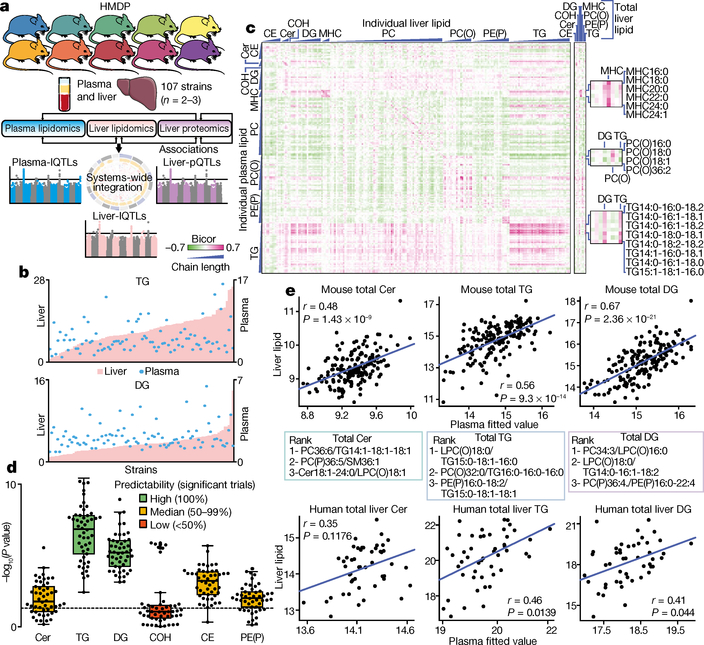Dysregulation of lipid homeostasis is a precipitating occasion within the pathogenesis and development of hepatosteatosis and metabolic syndrome.
These circumstances are extremely prevalent in developed societies and presently have restricted choices for diagnostic and therapeutic intervention.
Here, utilizing a proteomic and lipidomic-wide systems genetic strategy, we interrogated lipid regulatory networks in 107 genetically distinct mouse strains to disclose key insights into the management and community construction of mammalian lipid metabolism.
These embrace the identification of plasma lipid signatures that predict pathological lipid abundance within the liver of mice and people, defining subcellular localization and performance of lipid-related proteins, and revealing purposeful protein and genetic variants which can be predicted to modulate lipid abundance.
Trans-omic analyses utilizing these datasets facilitated the identification and validation of PSMD9 as a beforehand unknown lipid regulatory protein. Collectively, our research serves as a wealthy useful resource for probing mammalian lipid metabolism and supplies alternatives for the invention of therapeutic brokers and biomarkers within the setting of hepatic lipotoxicity.

Blood plasma reference materials: a world useful resource for proteomic analysis.
There is an ever-increasing consciousness and curiosity throughout the scientific analysis subject, creating a big demand for blood fraction samples in addition to different scientific samples. The translational analysis space is one other subject that’s demanding for blood samples, used extensively in <em>proteomics</em>, genomics, in addition to metabolomics.
Blood samples are globally the most typical organic samples which can be utilized in a broad selection of functions in life science. We hereby introduce a brand new reference blood plasma normal (heparin) that’s aimed as a world useful resource for the <em>proteomics</em> group.
We have developed these reference plasma requirements by defining the Control group as these with C-reactive protein ranges <three mg/L and a Disease group with C-reactive protein ranges>>30 mg/L.
In these references we’ve used each new child kids 1-2 weeks, in addition to children 15-30 years, and center aged 30-50 years, and aged sufferers on the ages of 65+. In complete, there have been 80 sufferers in every group within the reference plasma swimming pools.
We present information on the developments and traits of the reference blood plasma requirements, in addition to what’s utilized by the workforce members on the respective laboratories.
The requirements have been evaluated by pilot pattern processing in biobanking operations and are presently a useful resource that enables the <em>Proteomic</em> <em>society</em> to carry out quantitative <em>proteomic</em> research. By the use of top quality reference plasma samples, international initiatives, such because the Chromosome Human Proteome Project (C-HPP), will profit as one scientific program when the whole human proteome is mapped and linked to human ailments. The plasma reference requirements are a world useful resource and will be accessed upon request.
